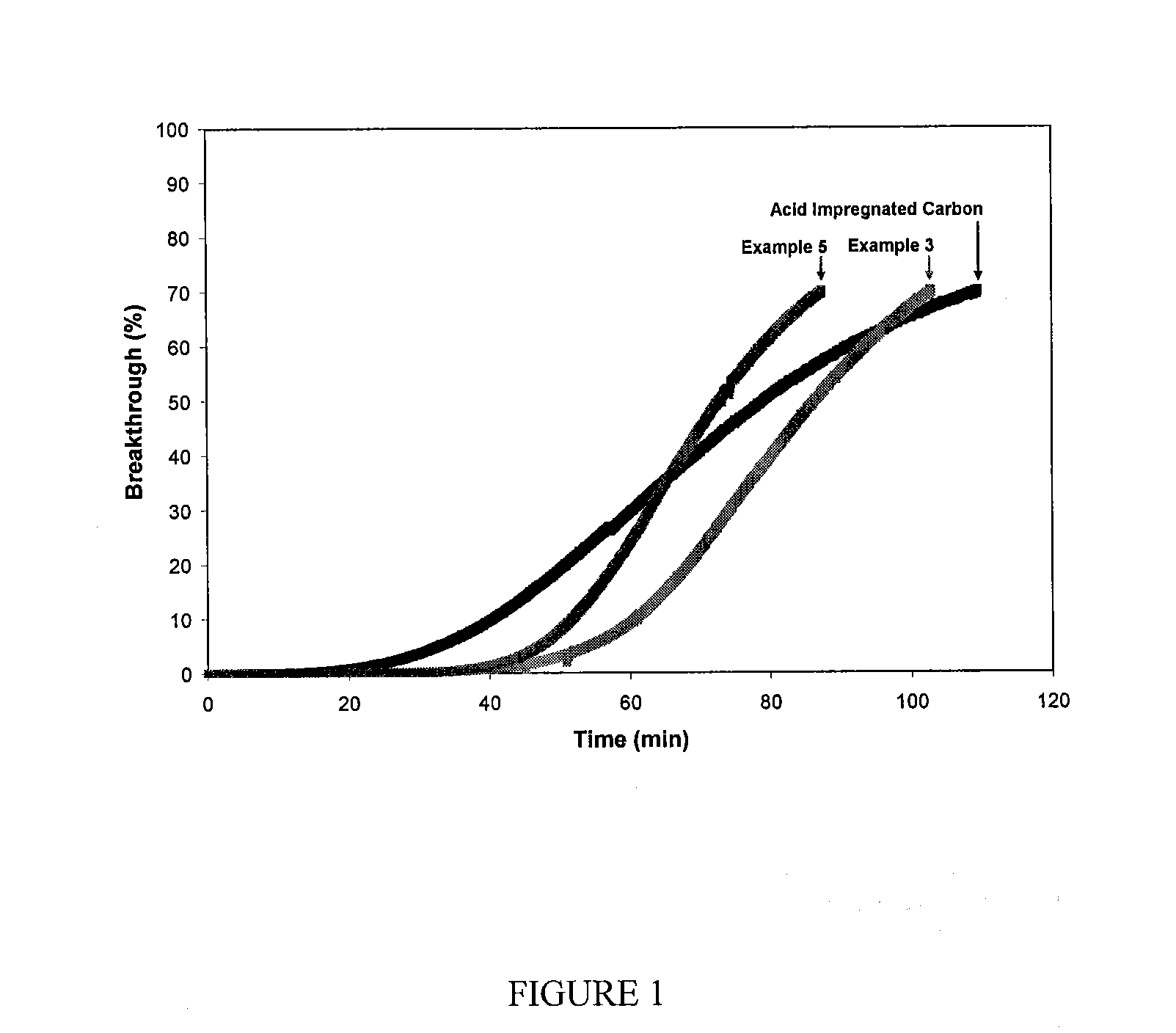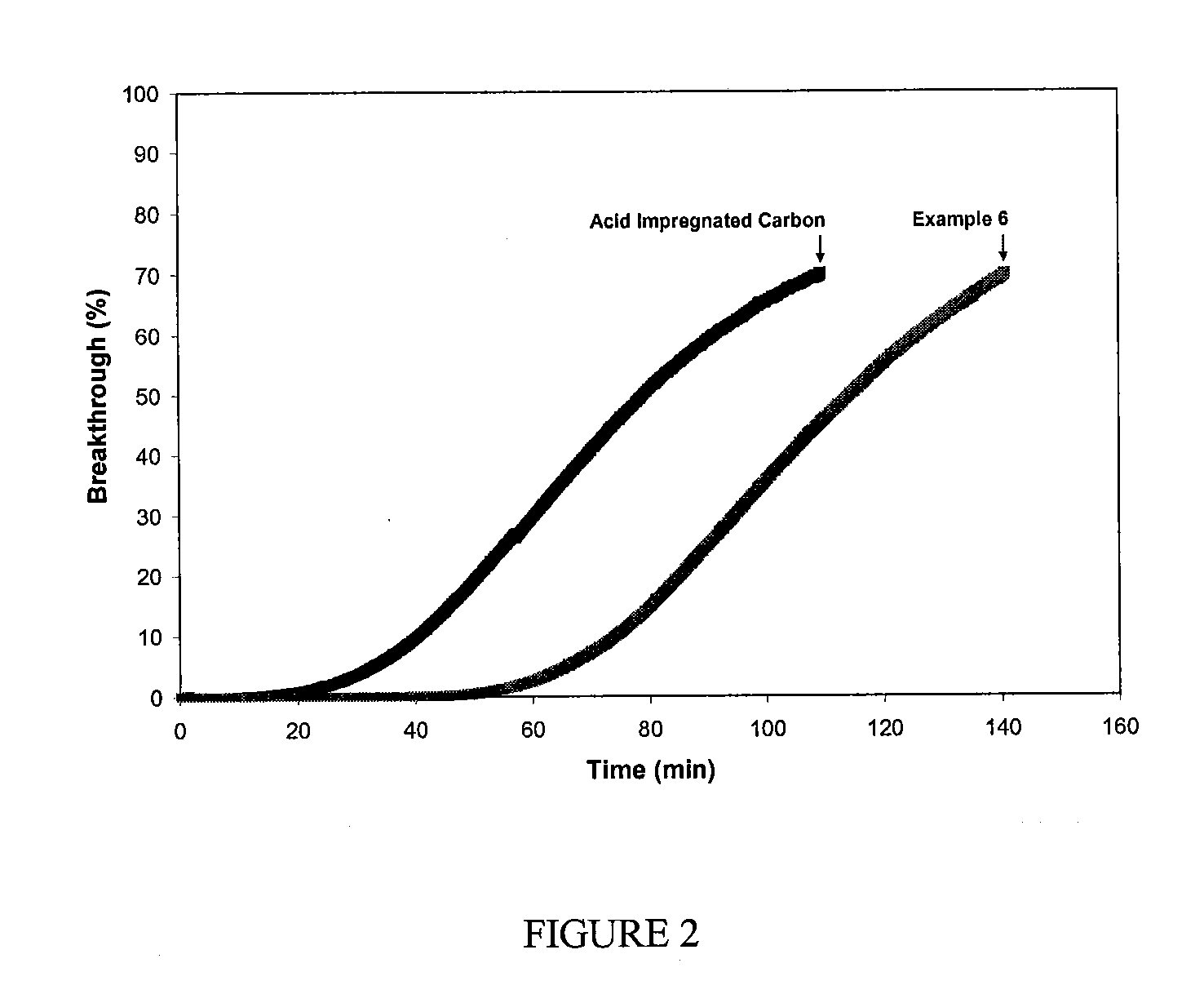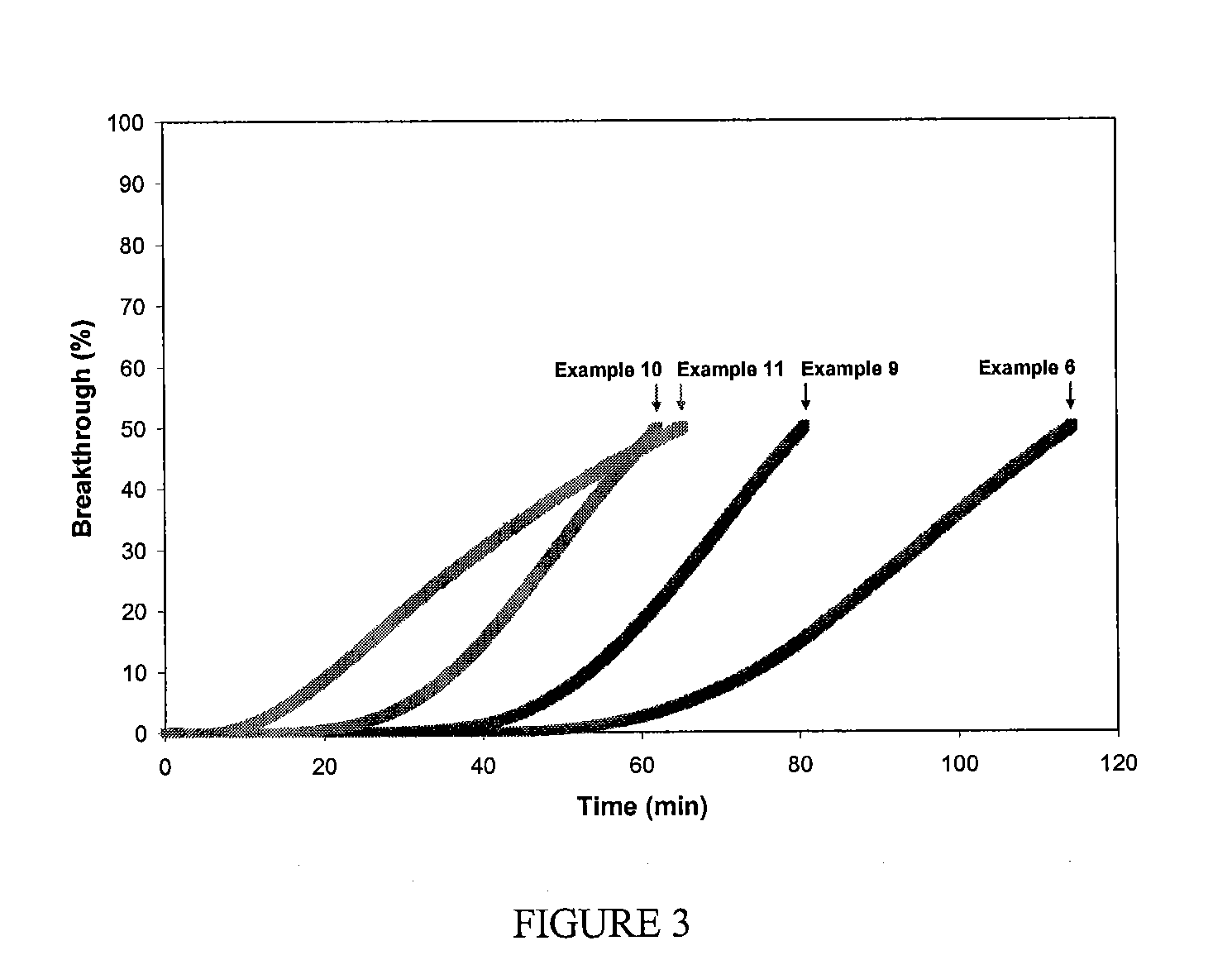Filtration Media for the Removal of Basic Molecular Contaminants for Use in a Clean Environment
a technology of filtration media and molecular contaminants, applied in the direction of dispersed particle separation, separation process, chemistry apparatus and processes, etc., can solve the problems of high corrosivity of amine-based gases, irreversible damage to documents and equipment, and potentially dangerous toxicity levels, so as to achieve stable and effective ammonia gas uptake, high ammonia removal efficiency and capacity, and cost-effective
- Summary
- Abstract
- Description
- Claims
- Application Information
AI Technical Summary
Benefits of technology
Problems solved by technology
Method used
Image
Examples
##ventive example 1
INVENTIVE EXAMPLE 1
[0056]An acid-impregnated media was made using the low structure precipitated silica support A. To create a homogeneously impregnated 30% H2SO4 by total weight of the dry media, 66.6 g of conc. H2SO4 (96.5%) was added to 150 g of the dry silica under high shear. To form granules and increase product density, the homogeneous acid impregnated silica powder was then wet granulated under high shear, by adding additional water until granules were formed (granulation could also be achieved using other methods, e.g., roller compaction or extrusion). The wet granules were then dried at 150° C. until a moisture of <10% was achieved. The granules formed were then sized by sieving to recover granules between 850 μm and 297 μm (20×50 US standard mesh).
##ventive example 2
INVENTIVE EXAMPLE 2
[0057]A second acid-impregnated media was made using the low structure precipitated silica support A. To create a homogeneously impregnated 40% H2SO4 by total weight of the dry media, 103.6 g of conc. H2SO4 (96.5%) was added to 150 g of the dry silica under high shear. To form granules and increase product density, the homogeneous acid impregnated silica powder was then wet granulated under high shear, by adding additional water until granules were formed (granulation could also be achieved using other methods, e.g., roller compaction or extrusion). The wet granules were then dried at 150° C. until a moisture of <10% was achieved. The granules formed were then sized by sieving to recover granules between 850 μm and 297 μm (20×50 US standard mesh).
##ventive example 3
INVENTIVE EXAMPLE 3
[0058]An acid-impregnated media was made using the relatively high structure precipitated silica support B. To create a homogeneously impregnated 30% H2SO4 by total weight of the dry media, 66.6 g of conc. H2SO4 (96.5%) was added to 60 g of H2O and this solution was added to 150 g of the dry silica under high shear. To form granules and increase product density, the homogeneous acid impregnated silica powder was then wet granulated under high shear, by adding additional water until granules were formed (granulation could also be achieved using other methods, e.g., roller compaction or extrusion). The wet granules were then dried at 150° C. until a moisture of <10% was achieved. The granules formed were then sized by sieving to recover granules between 850 μm and 297 μm (20×50 US standard mesh).
PUM
| Property | Measurement | Unit |
|---|---|---|
| velocity | aaaaa | aaaaa |
| diameter | aaaaa | aaaaa |
| height | aaaaa | aaaaa |
Abstract
Description
Claims
Application Information
 Login to View More
Login to View More - R&D
- Intellectual Property
- Life Sciences
- Materials
- Tech Scout
- Unparalleled Data Quality
- Higher Quality Content
- 60% Fewer Hallucinations
Browse by: Latest US Patents, China's latest patents, Technical Efficacy Thesaurus, Application Domain, Technology Topic, Popular Technical Reports.
© 2025 PatSnap. All rights reserved.Legal|Privacy policy|Modern Slavery Act Transparency Statement|Sitemap|About US| Contact US: help@patsnap.com



